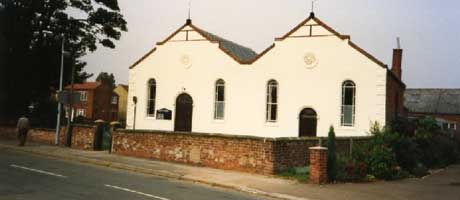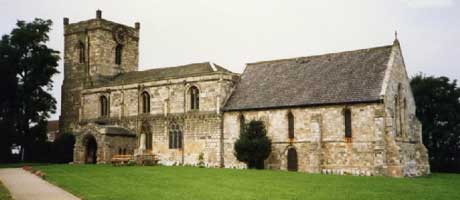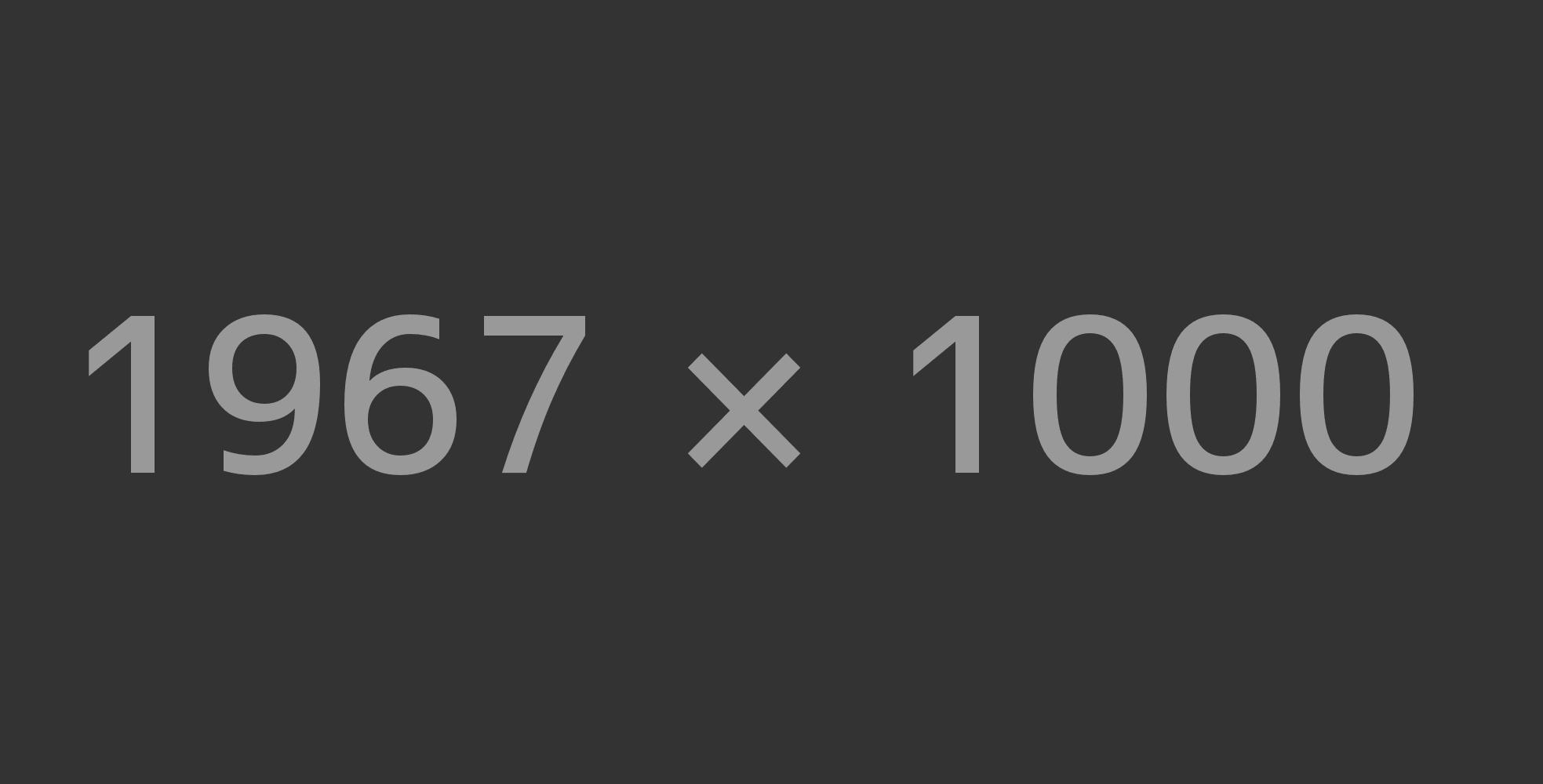Crowle (Crul)
Situated in the northern part of the Isle of Axholme the parish and township of Crowle contains approx. 6000 acres of land. One mile to the south lies the hamlet of Ealand and Crowle Wharf Station, this station is on the Grimsby to Doncaster line. Adjacent to this station runs the Stainforth to Keadby canal an Act being passed to raise money and construct this canal as early as 1793. After construction the canal was opened about 1800. This canal made the movement of goods easier and much heavier loads could be carried on the water than on the roads of that time.
This continued till the late 1850's when the South Yorkshire Railway laid a line to Keadby and established a station at Crowle. With the coming of the railway Crowle became the centre of traffic for the Isle of Axholme, its population which was 1889 inhabitants in 1831 increasing to 3122 in 1871. This was an increase of 1233 whilst at Epworth the increase was only 460 in that period. After 1871 the population declined, it was 2641 by 1891. This was caused by the agricultural depression which started in the 1870's with the import of cheap American wheat this continued until the First World War and it was not until the 1920's that Crowle's population returned to over 3000.
In the early 1900's a new railway station was opened at Eastoft Road, Crowle, when the Axholme Joint Railway laid a line from Goole to Haxey via Crowle and Epworth. This railway owing to a decline in traffic has now ceased to exist.
In the Domesday book Crowle was the most populous and valuable manor in the Isle of Axholme, it consisted of a manor house and 34 cottages. By 1821 this had increased to a population- tion of 1729 living in 295 houses.
The church is dedicated to Saint Oswald the christian King of Northumbria He was converted to christianity by the monks of Iona, but was slain by the heathen King Penda of Mercia at the battle of Maserfield on August 5th 642. The church at the centre of Crowle consists of a chancel, clerestoried nave of four bays, a north aisle, south porch and a western tower with a clock and three bells.
There are traces of Saxon and Norman architecture in the church, the south doorway consists of a highly ornamental semi- circular arch erected about the time of Henry 1st. There was an ancient porch protecting this doorway but this was demolished and a new one erected in 1903. In the church there is a carved oak alms box dated 1683. The chancel was rebuilt in 1856 and contains a stained glass window in 3 sections which depicts the crucifixion, St.John the Baptist and St.Bartholomew. This window was erected to the memory of Mrs Mary Brunyee of Sandall.
There are six more stained glass windows in the church. Two of these are to the memory of the fallen in the 1914-18 war, two to the Cocking family of the Curlews and the remaining two to other members of the Brunyee family. There is also a brass lectern dedicated to members of the choir who died in the 1914-18 conflict.
At the rear of the church there is part of an ancient cross or Runic Stone, with various carvings upon it, this could have been carved about AD 650 and may have been part of the ancient church. The Parish Registers start in 1561. Opposite the church there is the old Vicarage, now used as a retirement home. This was built by John Ashbourne the Vicar in 17101 with other additions to the original building being made by later incumbents. In the garden are 2 large and very old copper beech trees.
In the town there are other places of worship. These consist of Catholic Church dedicated to the Blessed Sacrament of Saint Norbert erected in the Early English style in 1872. There is a Baptist Chapel founded in 1599 situated on the corner of Mill Road and Bastoft Road, this has a Sunday School and a small graveyard with various nineteenth century memorial stones. A Congregational Chapel was founded here in 1760, this chapel which had fallen into disuse is now a furniture makers premises.
The Primitive Methodist Connection previously had a meeting house in Chapel Street built in 1862 at the corner of Cross St. and North St. There was also Bourne Chapel which after interim use as a garage is now also unused, the congregation attending the Methodist Chapel in Fieldside after unification with the Wesleyans. The building was erected in 1904 on the site of a previous Wesleyan Chapel built in 1836. Premises across the road are used for a Sunday School and secular events. Conversely at Ealand unification resulted in the demolition of the original Wesleyan Chapel, and the Methodists use the surviving Primitive Methodist Chapel for worship.
The enclosure of Crowle took place between the years 1812-1822. The first move was on Wednesday 13 July 1812 when there was a meeting of proprietors at The White Hart Inn, Crowle, to take into consideration an Inclosure.
On the 8th December 1812 there was introduced in the House of Commons a petition for enclosure drainage, waying, embarking and commutation of tithes of "Several Owners of Estates in the Townships of Crowle, Eastoft and Ealand in the Parish of Crowle". This petition became a Bill and received Royal assent on the 22nd June 1813 as "an Act for Inclosing Lands in the Townships of Crowle, Eastoft and Ealand in the Parish of Crowle in the County of Lincoln and extending into the West Riding of the County of York." The total area to be enclosed was 4286 acres (including Eastoft). The commission were appointed and took their oaths on the 13th September 1813, on this day also Joseph Haywood took the oath as Surveyor.
The Enclosure Award was completed and signed by Joseph Haywood and William Pilkington on the 17th June 1822
The Youth Centre in Church Street was previously a National Endowed School, it had the benefit of charities left by :- Richard Brewer 1687, Thomas Wackwood 1692, Richard Clark 1721, both this school and the Board School on Fieldside, which was built in 1871 at a cost of £2300, have been replaced by a new Junior School in Manor Road. The Catholic School is in the grounds of St. Norbert's Priory, this school established in the 1870's is still in existence. Further education is now provided at North Axholme Comprehensive School in Wharf Road.
In 1862 a Burial Board was established to provide a general cemetery for the inhabitants of the town, two mortuary chapels were erected, one for the Church of England, the other for Non-Conformists. A Cemetery Keeper's House was erected shortly after the cemetery was extended in the early 1920's and at the present moment a new extension is being added.
In 1854 a Gas Works was erected at the corner of Windsor Road and March Road. This had a capital of £1800 in £10 shares. It provided gas for the inhabitants of Crowle till about 1936 then electricity was brought to the town.
Situated in the northern part of the Isle of Axholme the parish and township of Crowle contains approx. 6000 acres of land. One mile to the south lies the hamlet of Ealand and Crowle Wharf Station, this station is on the Grimsby to Doncaster line. Adjacent to this station runs the Stainforth to Keadby canal an Act being passed to raise money and construct this canal as early as 1793. After construction the canal was opened about 1800. This canal made the movement of goods easier and much heavier loads could be carried on the water than on the roads of that time.
In 1848 an Assembly Room was built in Cross Street adjacent to the Fishmongers Arms; this building is now part of Hunters Inn. This building was superseded with the erection of the Market Hall in the Market Place by a limited company with a capital of £1450 in £5 shares. This building had a large assembly room on the first floor and since it was built has had many uses as the Young Men's Institute, Ballroom, Cinema, Betting Shop, Mediaeval Banquets, and is now in use as the "Market Tavern".
In the early 1870's Crowle had a newspaper of its own. The Crowle Advertiser, a weekly, sold for a halfpenny. The printer, Richard Wood, also published the Crowle Almanac, price one penny. This paper later amalgamated with the Epworth Bells which is now part of a large group.
The Local Government of Crowle. The old form of local government had from time immemorial been by the Vestry, a meeting of the ratepayers in the Vestry of the Parish Church. To have to obtain the sanction of the ratepayers "in Vestry assembled" for every detail the relief of the poor, in the management of the highway and other secular affairs as well as in the raising and expenditure of the Church rates then allowed, must have been very inconvenient.
In '1830 "Sir John Hobhouses Act" gave legal sanction for a Select Vestry to be formed. Therefore a vestry meeting was held April 21 1831 to consider the propriety of forming a Select Vestry and it was unanimously decided to do so. For this purpose another meeting of ratepayers was called on May 6th and twelve of these ratepayers were elected as the first Select Vestry for Crowle. In addition to these twelve were five ex-officio members consisting of the Vicar, two Churchwardens and two Overseers of the poor. These persons formed therefore the first official Council of the parish.
Under the Local Government Act of 1858, the Select Vestry was replaced by a Local Board which was formed on llth August, 1865. Later under the provisions of the Local Government Act of 1894, an Urban District Council was established. This remained in being until 1936 when the Urban Council was abolished and Crowle became part of the Isle of Axholme Rural District Council. In 1974 the Isle of Axholme Rural District was amalgamated with Goole and Howden to form Boothferry Borough Council. The Parish Council of Crowle which is an elected body of fifteen members, meets monthly.


